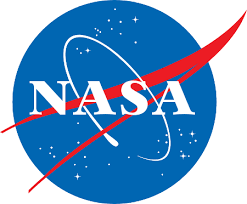LAB REPORT
Science and Technology Making Headlines
May 13, 2016


Hyperloop Transportation Technologies has licensed passive magnetic levitation technology from Lawrence Livermore. Image courtesy of Hyperloop Transportation Technologies.
Mag lev rises above
Imagine getting to Los Angeles from San Francisco in less than 30 minutes and not traveling by car, bus or plane.
That’s what Elon Musk, founder of Tesla Motors and Space X, tends to do with a little help from Lawrence Livermore technology and a train called Hyperloop.
A passive magnetic levitation (mag lev) system to float its trains in tubes was originally developed by the late physicist Dick Post at Lawrence Livermore National Laboratory (LLNL) in the 1990s.
Mag lev has never been used for anything on this scale, but it promises to be far simpler, cheaper, and safer way to make the Hyperloop work.
The system, which Livermoreoriginally dubbed Inductrack, uses an array of permanent magnets on the vehicle. As they move over conductive arrays in the track, they create an electric, and therefore magnetic, field. That field pushes the vehicle up off the track. It’s a self-stabilizing system: If the pod rises too high, the force weakens, and the pod drops back to its comfort zone.


The planet Mercury is seen in silhouette, lower third of image, as it transits across the face of the sun. On Monday, May 9, Mercury passed between the Earth and sun in a rare astronomical event known as a planetary transit. Photo courtesy of Bill Ingalls/NASA.
Mercury says hi
NASA's stunning video of the transit of Mercury across the sun on Monday, May 9, was made possible in part by work done by Lawrence Livermore scientists. Regina Soufli and her LLNL team collaborated with Berkeley Lab's Center for X-Ray Optics and with Reflective X-ray Optics, LLC, on the multilayer mirrors used in the extreme ultraviolet (EUV) telescopes of NASA's Solar Dynamics Observatory (SDO) mission.
Around 13 times per century, Mercury passes between Earth and the sun in a rare astronomical event known as a planetary transit. The 2016 Mercury transit occurred on May 9 between roughly 4:12 a.m. and 11:42 p.m. PDT.
This project was managed by the Smithsonian Astrophysical Observatory and by Lockheed Martin Corporation, for NASA.
Launched in 2010, SDO is NASA's most advanced solar mission to date. It studies the sun's interior, its atmosphere (called the corona) and the impacts on Earth's upper atmosphere and nearby space environment.


LLNL researcher Megan Bruck Syal examines a pair of meteorites destined to be vaporized by high-powered lasers. Photo by Julie Russell/LLNL.
Asteroids could rock the Earth
Researchers have found space rocks that might have formed about 4.6 billion years ago in Antarctica. They survived the violent collisions in the asteroid belt before being rained down on Earth.
The rocks were categorized at NASA Johnson Space Center and sent to Megan Bruck Syal, a Lawrence Livermore researcher. The rocks will be vaporized by a high-powered laser. The data they would yield on asteroid deflection could one day save the planet.
Bruck Syal said that each comet and asteroid has its own distinctive character, which presents a challenge for predicting how an individual target would respond to a deflection attempt. She further explained that the makeup may vary significantly from asteroid to asteroid.


Lawrence Livermore recently received the 16-chip IBM TrueNorth platform, which mimics the human brain in processing. Photo courtesy of IBM.
A chip off the ol’ brain
A new type of computer chip architecture called neuromorphic computing, which is inspired by the way the human brain works, is beginning to be used.
IBM, in collaboration with Lawrence Livermore, has developed a neuromorphic computer chip that they’re calling TrueNorth. Each chip is about the size of a stamp and is packed with 1 million neurons, 256 million synapses and 4,096 parallel cores. Despite all the circuitry, each chip draws only 70 milliwatts of power, or about the amount of power needed to run an iPad.
Michel McCoy, LLNL program director for Weapon Simulation and Computing, said that “the low power consumption of these brain-inspired processors reflects the industry’s desire and a creative approach to reducing power consumption in all components for future systems as we set our sights on exascale computing.”


The New York subway system was chosen to test DNATrax, because it is the largest in the country.
It’s a gas
An invisible, odorless, harmless gas was released into part of New York City's subway system this week as part of ongoing 'bio-terrorism' tests to see how lethal particles would move through the tunnels and platforms in the event of an attack.
The experiment will help Homeland Security understand the impact of aerosol-dispensed anthrax and ricin, as well as chemical weapons such as mustard gas and Sarin.
The technology, DNATrax, was developed by Lawrence Livermore National Laboratory. It is a DNA-based additive that contains data which can be distinguished from common bacteria in heat-controlled tests.
It can be used to trace the origin of food conaminated by E.coli or salmonella. Experiments have shown it can trace the exact tree your apple came from. But now it has been sprayed on the gas particles being sent through New York's subway system. There is no health risk to the public.


Researchers have taken images of a chemical process that occurs when the retina in the human eye responds to light.
Can you see the light?
In a new experiment using the world's fastest camera, a team of scientists, including LLNL’s Matthias Frank, documented the fundamental processes of a chemical reaction as they occurred in real time: Seeing how proteins, the building blocks of life, work in a few quadrillionths of a second.
The researchers describe how they acquired images of the effect of light on a tiny crystallized protein.
Light absorption by proteins is the primary event of processes such as vision and photosynthesis that are fundamental to many life forms, including humans as well as plants and bacteria. The researchers focused on photoactive yellow protein, a light-absorbing component found in certain bacteria. The basic chemical process they observed, known as isomerization, also occurs when the retina in the human eye responds to light.





